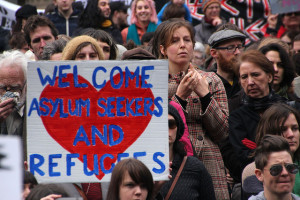This was originally posted at Sarapis
Immediately after a disaster, information managers collect information about who is doing what, where, and turn it into “3W Reports.” While some groups have custom software for collecting this information, the most popular software tool for this work is the spreadsheet. Indeed, the spreadsheet is still the “lingua franca” of the humanitarian aid community, which is why UNOCHA’s Humanitarian Data Exchange project is designed to support people using this popular software tool.
After those critical first few days, nonprofits and government agencies often transition their efforts from ad hoc emergency relief and begin to provide more consistent “services” to the affected population.
The challenge of organizing this type of “humanitarian/human services” information is a bit different than the challenges associated with disaster-related 3W reports, and similar to the work being done by people who manage and maintain persistent nonprofit services directories. In the US, these types of providers are often called “211” because you can dial “211” in many communities in the US to be connected to a call center with access to a directory of local nonprofit service information.
During the ongoing migrant crisis facing Europe, a number of volunteer technical communities (VTCs) in the Digital Humanitarian Network engaged in the work of managing data about these humanitarian services. They quickly realized they needed to come up with a shared template for this information so they could more easily merge data with their peers, and also so that during the next disaster, they didn’t have to reinvent the wheel all over again.
Since spreadsheets are the most popular information management tool, the group decided to focus on creating a standard set of column headers for spreadsheets with the following criteria:
- Geocode-able
- Fewest fields possible
- HXL compliant (learn more about HXL)
To create this shared data model, we analyzed a number of existing service data models, including:
- Stand By Task Force’s services spreadsheet
- Advisor.UNHCR services directory
- Open Referral Human Service Data Standard (HSDS)
The first two data models came from the humanitarian sector and were relatively simple and easy to analyze. The third, Open Referral, comes from a US-based nonprofit service directory project that did not assume that spreadsheets would be an important medium for sharing and viewing data.
To effectively incorporate Open Referral into our analysis, we had to convert it into something that could be viewed in a single sheet of a spreadsheet (we call it “flat”). During the process we also made it compliant with the Humanitarian Exchange Language (HXL), which will enable Open Referral to collaborate more with the international humanitarian aid community on data standards work. Check out the Open Referral HSDS_flat sheet to see the work product.
We’re excited about the possibility that Open Referral will take this “flat” version under their wing and maintain it going forward.
Once we had a flat version of Open Referral, we could do some basic analysis of the three models to create a shared data model. You can learn about our process in our post “10 Steps to Create a Shared Data Model with Spreadsheets.”
The results of that work is what we’re calling the Humanitarian Service Data Model (HSDM). The following documents and resources (hopefully) make it useful to you and your organizations.
- HSDM Template – use this to collect data using the HSDM format
- HSDM Working Document – this shows you the work we did to arrive at the HSDM
- HSDM Index Document – this document has more information and additional links about HSDM.
- Humanitarian Data Standards Google Group – discuss and get updates on the HSDM and other data initiatives. Send feedback to this Google Group!
- Data Standards on ResilienceColab – news, directories and other information useful for human and humanitarian data standards initiatives.
We hope the HSDM will be used by the various stakeholders who were involved in the process of making it, as well as other groups that routinely manage this type of data, such as:
- member organizations of the Digital Humanitarian Network
- grassroots groups that come together to collate information after disasters
- big institutions like UNOCHA who maintain services datasets
- software developers who make apps to organize and display service information
I hope that the community that came together to create the HSDM will continue to work together to create a taxonomy for #service+type (what the service does) and #service+eligibility (who the service is for). If and when that work is completed, digital humanitarians will be able to more easily create and share critical information about services available to people in need.
* Photo credits: John Englart (Takver)/Flickr CC-by-SA

Leave a Reply